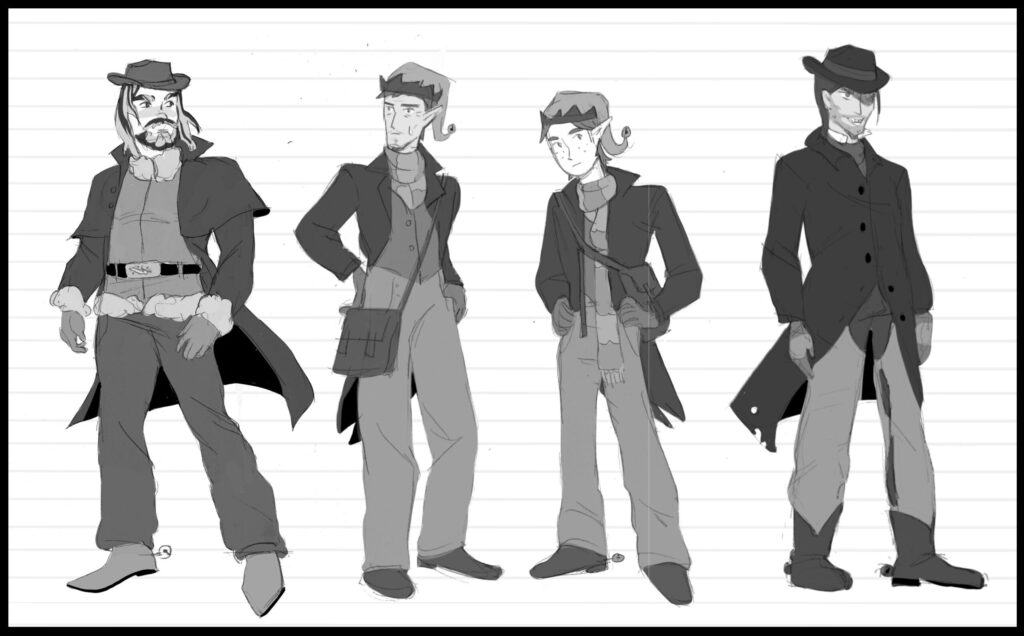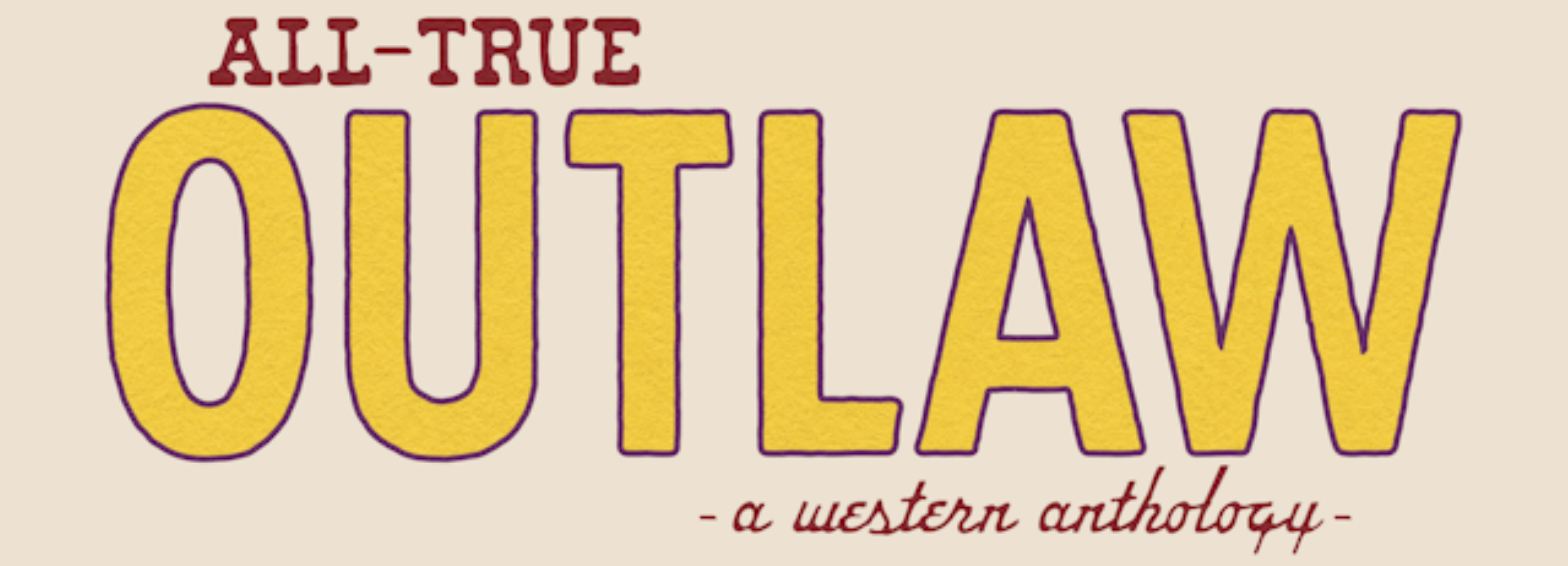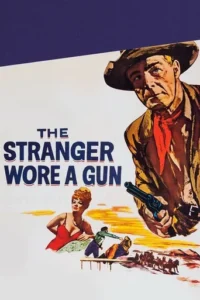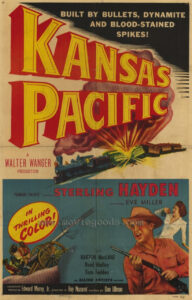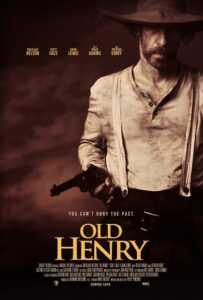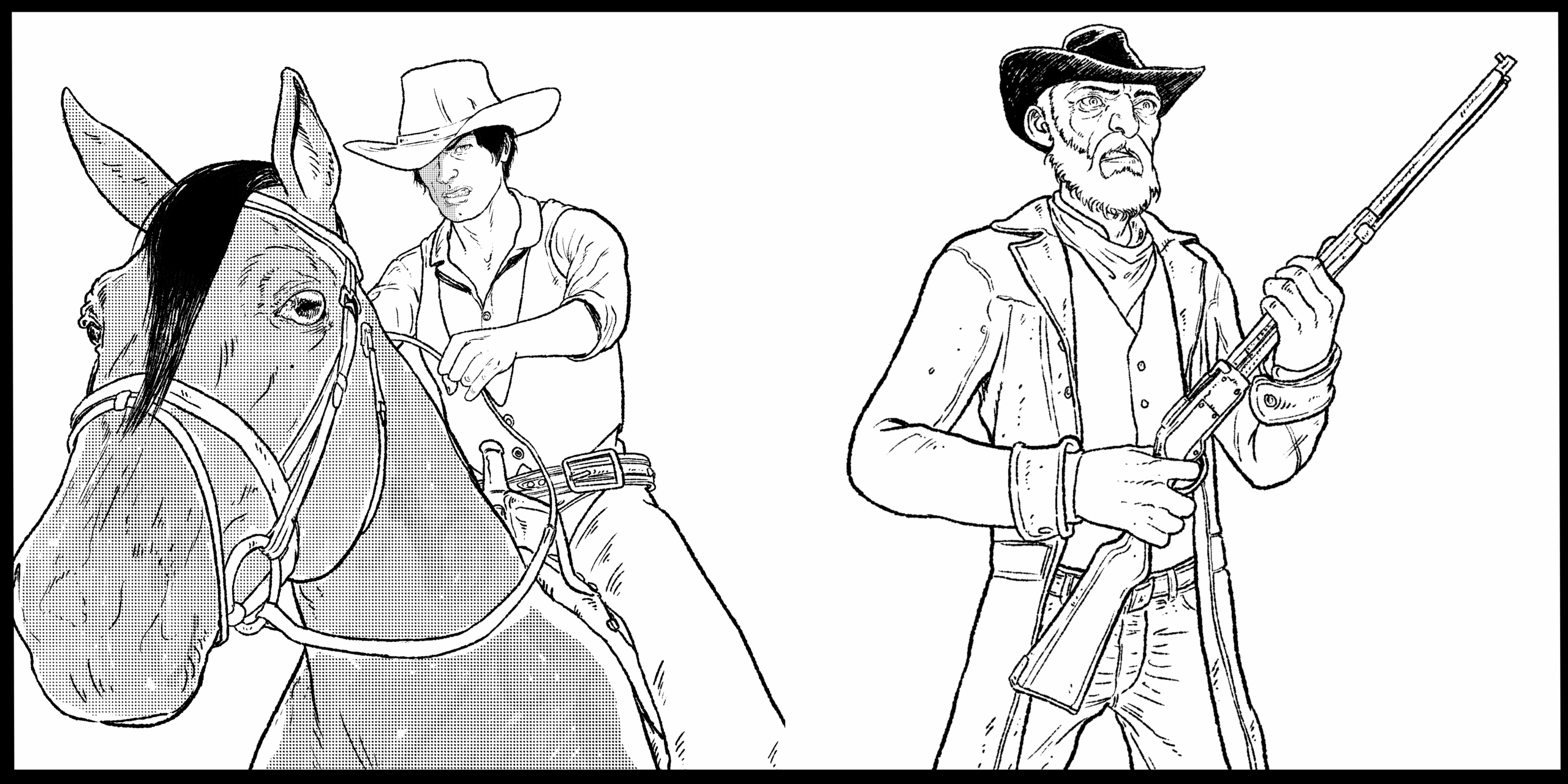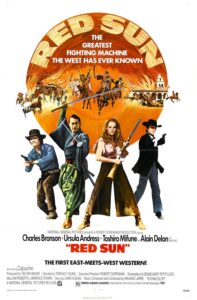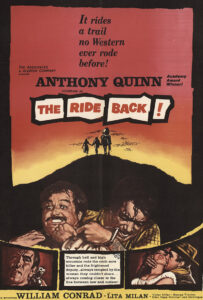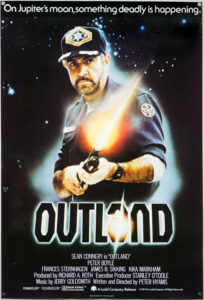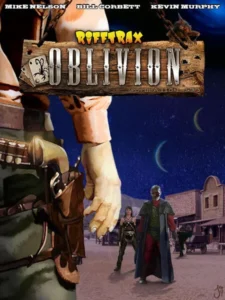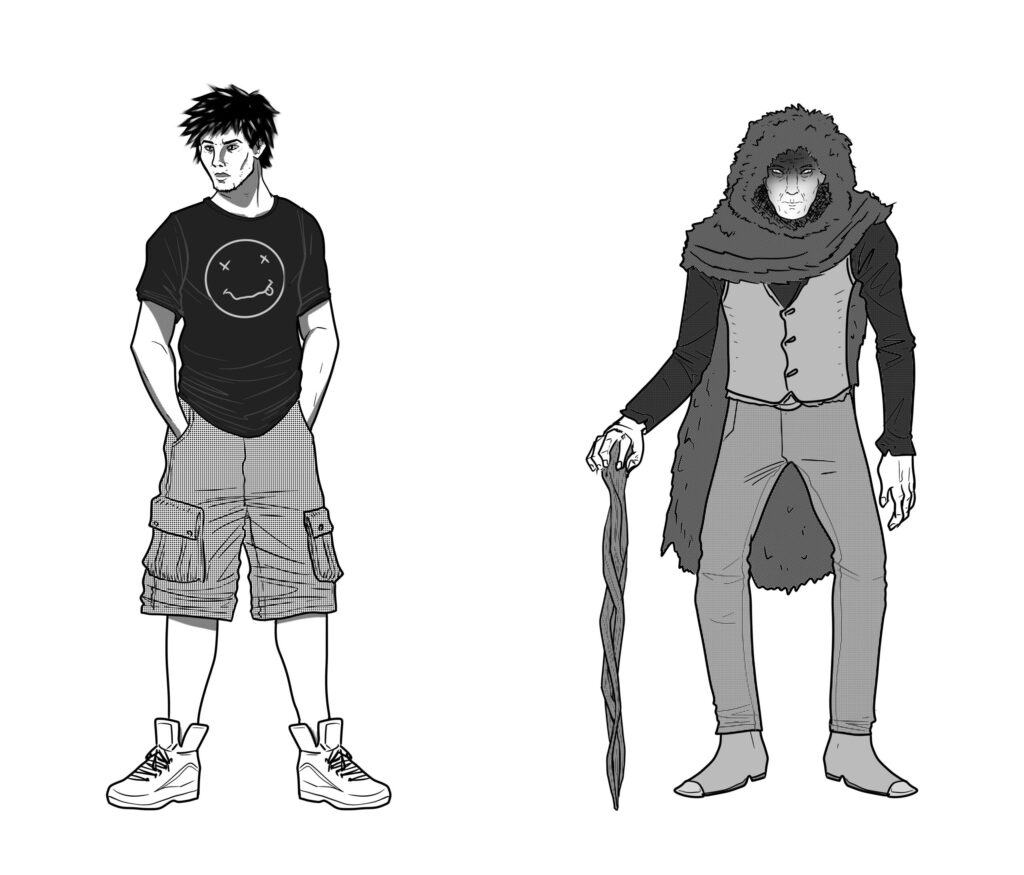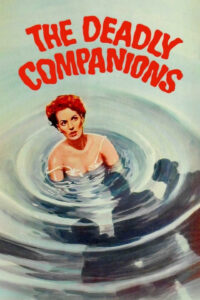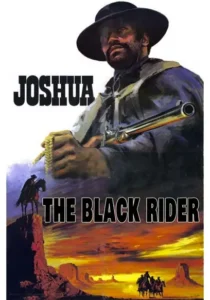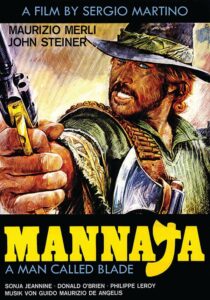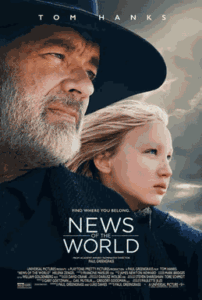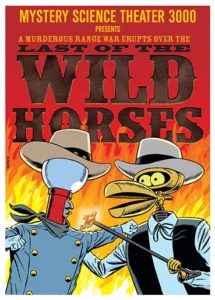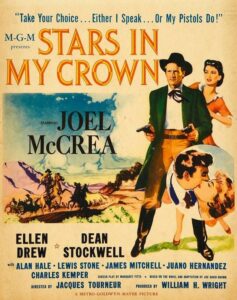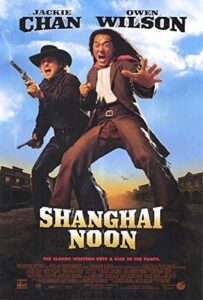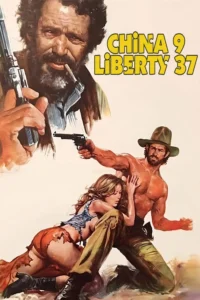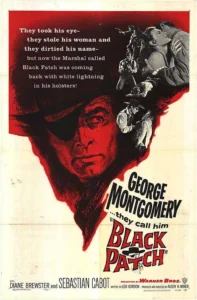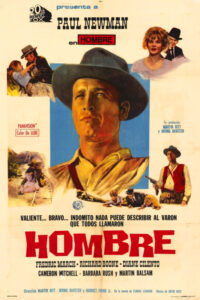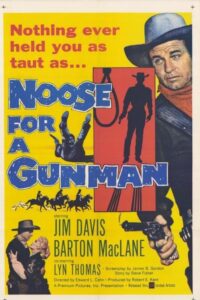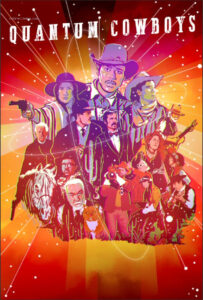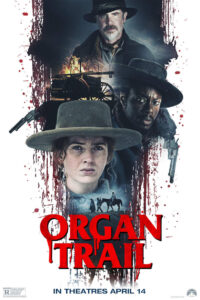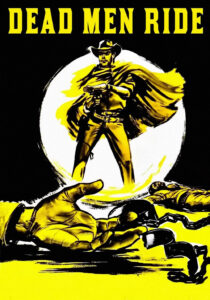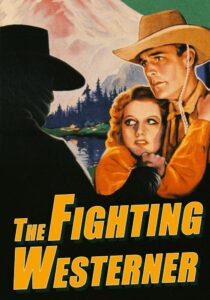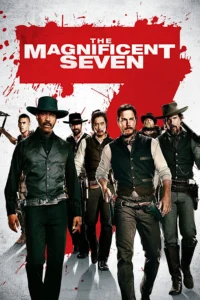Dear gunfighters,
Four more movies have been compiled in Project: 100 Westerns!
While in past write-ups I’ve claimed that I don’t really have a methodology of the movie picks, I realized that’s a bit of a lie. While I don’t normally select based on subgenre or the talent in front of or behind the camera, I definitely try to divvy my choices up by decade. I like to get a cross sample of the different eras of Hollywood, and Westerns are a fantastic time capsule for this.
In this group I definitely slanted toward newer releases… Let’s see how it went!
#36. Slow West (2015)
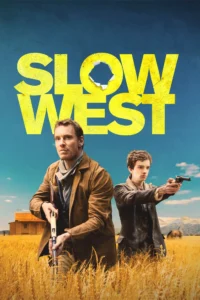
In 1870, a lovesick boy and a bounty hunter travel through Colorado to find the boy’s crush, but the bounty hunter has other plans…
It’s sort of wild this movie has been out for ten years, as it still feels somewhat new to me. Starring Kodi Smit-McPhee and Michael Fassbender, this wandering low-budget Western with a revisionist slant is methodical in its gait. Not a whole lot happens plot-wise, but it somehow feels full and complete nonetheless.
A lot of the drive behind the endeavor is fueled by the interactions between the naive but determined Jay and the wise but jaded Silas. This is hardly the first Western to team up two disparate souls but the reluctant camaraderie between the two provide the plot with enough juice to reach the end goal. The central tension of Silas tracking down Jay’s object of affection, Rose Ross (Caren Pistorius), while the younger man tries to wrangle his emotions is a pretty damn good hook.
While there at lot of aesthetics that feel ripped from Spaghetti Westerns, including wonderful accents and wacky, messy characters, what differentiates this movie from most others is the choice of color palette. There’s sort of this oversaturated thing going on here. The brightness and severe tone of everything are dreamlike and almost nauseating, there’s a certain unnaturalness to it that goes counter to the drab and muted style that the genre is known for. It’s a daring choice but sways well with the mismatched duo of Jay and Silas.
Slow West is a pretty good film, and a quick watch too. It was sort of a critical darling there when it came out but doesn’t get the flowers it deserves as one of the better modern Westerns.
#37. West of the Pecos (1945)
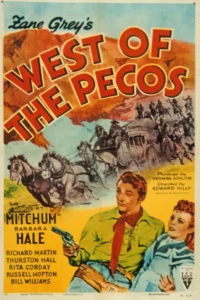
A young Robert Mitchum stars in this Texas-set story about a wealthy man and his daughter moving West and getting caught up in the drama of the frontier. Frankly, the beats of this movie are neither compelling or original. There’s a stagecoach robbery that happens in the beginning and it drives some story movement but really it serves as the branch for the foliage of love to sprout.
There’s a hardy comedic bend to the going-ons here. This Zane Grey adaptation kicks off in Chicago where Colonel Lambreth (Thurston Hall) is convinced by his daughter Rill (Barbara Hale) to move West to ease his deteriorating health. Quickly upon arrival, they are pulled into the life of Pecos Smith (Mitchum), a charming cowboy with a hardened edge. What stirs the drink is that Rill, after being harassed in town, decides to disguise herself as a man which creates a humorously tense relationship with Pecos as she flirtatiously challenges him at every turn. There’s a sort of a queerness to the story that works really well, even by modern sensibilities.
I do want to note here the role of the comical Chito Rafferty, played by Richard Martin. When I was looking up the background on West of the Pecos I discovered Chito appears in over 30 different movies, all played by Martin. The Mexican-Irish sidekick not only appears all over the West and abroad, but in several different time settings. Whenever gripes about comic book movie reboots or re-castings of legacy characters I can now point to the Chito Cinematic Universe as an example of the intelligence of audiences, even way back when.
The movie does a good enough job – it’s got the lightness of a classic Western with a dose of peril to keep the viewer on their toes.
#38. Jonah Hex (2010)
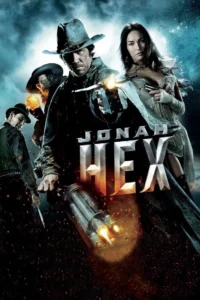
Josh Brolin, Megan Fox, John Malkovich, Will Arnett, Michael Fassbender (again), Michael Shannon, Lance Reddick, Jeffrey Dean Morgan.
Yep, this is one of the most squandered casts of all time.
DC Comics’ Jonah Hex is very likely the premiere comic book Western character (and a huge inspiration for the All-True Outlaw comics). Created in the ‘70s, the adventures of the ex-Confederate bounty hunter were catalogued in comics All-Star Western and Weird Western Tales. Later, cementing his appeal, Jonah was catapulted into increasingly odd scenarios, like post-apocalyptic futures and zombie-horror jaunts. The character always has had a slick relationship with the amazing and the occult, but absolutely can excel in more grounded realms too.
This concept was lost on the production team behind Jonah Hex, where nearly every aspect of the movie is dialed up to eleven. In an attempt to invoke the spectacle of the four-colored world, Hex can (somehow) speak to corpses, gunshots propel victims across rooms and explosions rupture from seemingly nowhere. The tropes of the West are overly baroque and severe. It’s like the European Western on Super Soldier Serum. This flick somehow learned the wrong lessons of Wild, Wild West, all while hitting a lot of similar story beats. Probably the most egregious thing, though? It’s set in the South! There’s this underlying post-Civil War commentary that does not land at all.
It’s essentially Red Dead Redemption: The Movie, which coincidentally debuted the same year. The actors move sort of like stiff NPCs, the internal physics are bombastic, and there’s outlandish oddities like an underground fight club featuring a snake-man from “halfway across the world”.
It’s pretty much universally understood to be a very bad movie, and going in knowing that…I actually sort of like it more than I did seeing it for the first time about fifteen years ago. It’s just an absurd piece of art, a twistedly misguided homage to both films and comics, and with generally good performances across the board, you could do worse in the genre.
#39. Dead Man (1995)
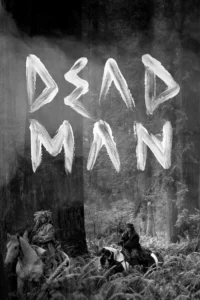
“Every night and every morn’, Some to misery are born, Every morn’ and every night, Some are born to sweet delight, Some are born to sweet delight, Some are born to endless night.”
The cult classic Dead Man, directed by Jim Jarmusch, is sort of a herald of the type of Western that would be popular for the next couple decades. Artsy, thoughtful, with a heavy swath of weirdness, it marries the old films of the American frontier with modern technique.
This is where the descriptor labels before the word “Western” gets muddled. The term “Acid Western” applies here, for sure – it’s very likely the epitome of that subgenre. But it also skitters into “neo-Western” territory. From casting choices to soundtrack to literary allusions, it’s a piece that portends the future of filmmaking. There’s a lot to admire here, but also, damn this thing is just a bit full of itself.
Scenes drag on a great deal longer than they need; the tone whips you around like a ride on a bucking bronco; the characters pontificate and monologue just for the sake of filling the air with sound. There’s a lot about Dead Man that I didn’t “get”, which in some ways makes it an fantastic Acid Western, but not a great movie.
Johnny Depp stars as William Blake, a numbers-man from Cleveland who relocates to the West for a job but quickly finds himself in peril when he murders a man in self-defense. He takes a shot to the chest and flees, only to be found by Nobody (Gary Farmer), a sorta-exiled Native brimming with thoughts of wisdom. Nobody informs Blake that the still-lodged bullet will kill him soon enough and the pall of death hangs over Blake in every step and action. The audience is on a ride along toward his inevitable death.
The movie is littered with a heap of good-to-great performances. Most notable is Robert Mitchum, in his final film role, as the town boss, but we also get great (albeit brief) stuff from Billy Bob Thornton, Alfred Molina, Michael Wincott, Crispin Glover and others. Depp is pretty good, as well, though he’s so confused and reactive in this that he’s more a good scene partner for the other actors than a leading man.
Neil Young provides the soundtrack with the very improvisational approach of riffing on his electric guitar, which adds a lot to the overall disjointed, stumbling nature of the whole affair.
I didn’t love this movie, but also think it’s a near must-watch for Western fans. It does a lot with a little, even if it has you checking your watch occasionally.
We’re chugging along like a brand-new locomotive here. Return to our pasture on October 6th, 2025 for a Western comic much in the build of some of these movies we just reviewed.
Westward!
~Jamil
